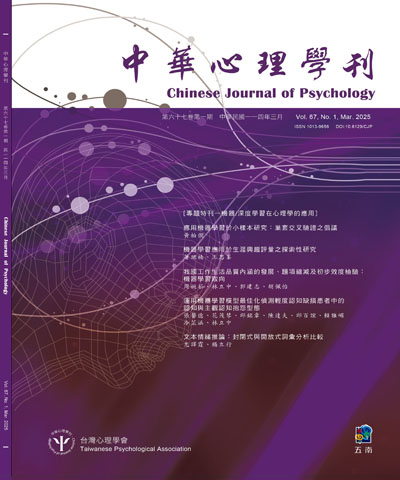
選擇卷期
- 期刊
This study examines (1) associations between four types of family and peer victimization and child internet addiction and (2) the mediating effects of psychological symptoms on these associations. Data were collected from a national proportionately-stratified random sample of 6,233 fourth-grade primary school students in Taiwan in 2014. Bivariate correlations and sets of multiple regression analyses were conducted to examine the direct effects of multi dimensional victimization on child internet addiction and the indirect effects through psychological symptoms. The results reveal that being male and experiencing victimization (psychological neglect, physical neglect, witnessing domestic violence, and bully victimization) are associated with an increased risk of developing psychological symptoms and internet addiction among children. Moreover, we found that psychological symptoms partially mediate the associations between multidimensional victimization and child internet addiction, with the exception of physical neglect. In conclusion, this study demonstrates (1) the direct and indirect effects of multidimensional victimization on the psychological symptoms and child internet addiction, and (2) the importance of early family- and school-based prevention and intervention in addressing related public health concerns of multidimensional victimization and child internet addiction.
- 期刊
The main goal of the present study was threefold: (1) to establish a test that utilizes face images collected and normed in the Taiwanese society in order to provide a culturally calibrated tool for assessing face memory ability, (2) to examine the relationship between face memory performance and a range of face processing tasks to reveal underlying mechanisms that may play an important role in face memory, and (3) to investigate the relationship between age differences in face memory performance and those in holistic processing as revealed by the face processing tasks. To create the Taiwanese face memory test (TFMT), we followed the procedure of Cambridge Face Memory Test (CFMT), and used images from a Taiwanese face database. Like CFMT, TFMT was administered in three stages with increasing difficulty. The results of TFMT revealed a pattern almost identical to that found with CFMT (Study 1). In addition, younger adults outperformed older adults in TFMT as well as in all three face processing tasks (Studies 2 & 3). Furthermore, while younger adults exhibited reliable inversion effects in both component and configural tasks, older adults failed to do so except for the oldest subgroup showing inversion effect in the configural task. In contrast, older adults exhibited a pattern of interaction between alignment and congruency similar to that found with younger adults for the composite task, demonstrating both age groups can process faces holistically. Regression analyses on the relationship between face memory and face processing performances for both age groups revealed that, while each face processing task has its own share of holistic processing, they may be tapping into different aspects of holistic processing. Moreover, holistic processing captured by the component task and its inversion effect, entailing subtle spatial relationship between local facial features and landmarks, may underlie face memory performance for both younger and older adults in Taiwan. Taken together, besides showcasing distinct styles or strategies between younger and older adults in coping with the specific demands of each face processing task, our findings suggest that our participants, both young and old, appeared to rely upon the same aspects of holistic and non-holistic processing revealed by the component task, for encoding and later retrieving memory for faces.
- 期刊
根據恐懼管理理論(Terror Management Theory),當人們面臨死亡威脅時,會適時作出防衛。這種防衛有一套雙元歷程模式:近端防衛與遠端防衛。在遠端防衛中,文化世界觀尤為重要。在西方研究中,人們常以對自身文化持正向或偏好的態度,來防衛死亡威脅;然而在亞洲研究中卻難以得到驗證,因此本研究的目的在於重新檢驗文化世界觀的防衛方式。研究操弄參與者的死亡想法,藉由分心作業的方式,將死亡想法掉入意識邊陲中,以探究遠端防衛的本質。研究從注意力面向出發,探討文化世界觀與防衛死亡想法之間的關係。研究設計兩個實驗,實驗一以視覺搜尋作業進行研究,以正確率與反應時間當作依變項。結果發現當人們進行遠端防衛時,對於與自身文化有關的線索,表現出較高的正確率;但在反應時間上,未發現有顯著差異。實驗二以眼動追蹤儀器當作研究工具,以首次凝視位置的數量,及凝視時間作為依變項。結果發現當人們進行遠端防衛時,對於與自身文化有關的線索,表現出較長的凝視時間,但在首次凝視位置的數量上,並未有顯著差異。綜合以上的結果,本研究得到支持文化世界觀遠端防衛效果的證據:人們花較多時間觀看與自身文化相關的線索,亦能較正確的辨識與自身文化相關的物件,因此與西方研究相同。

